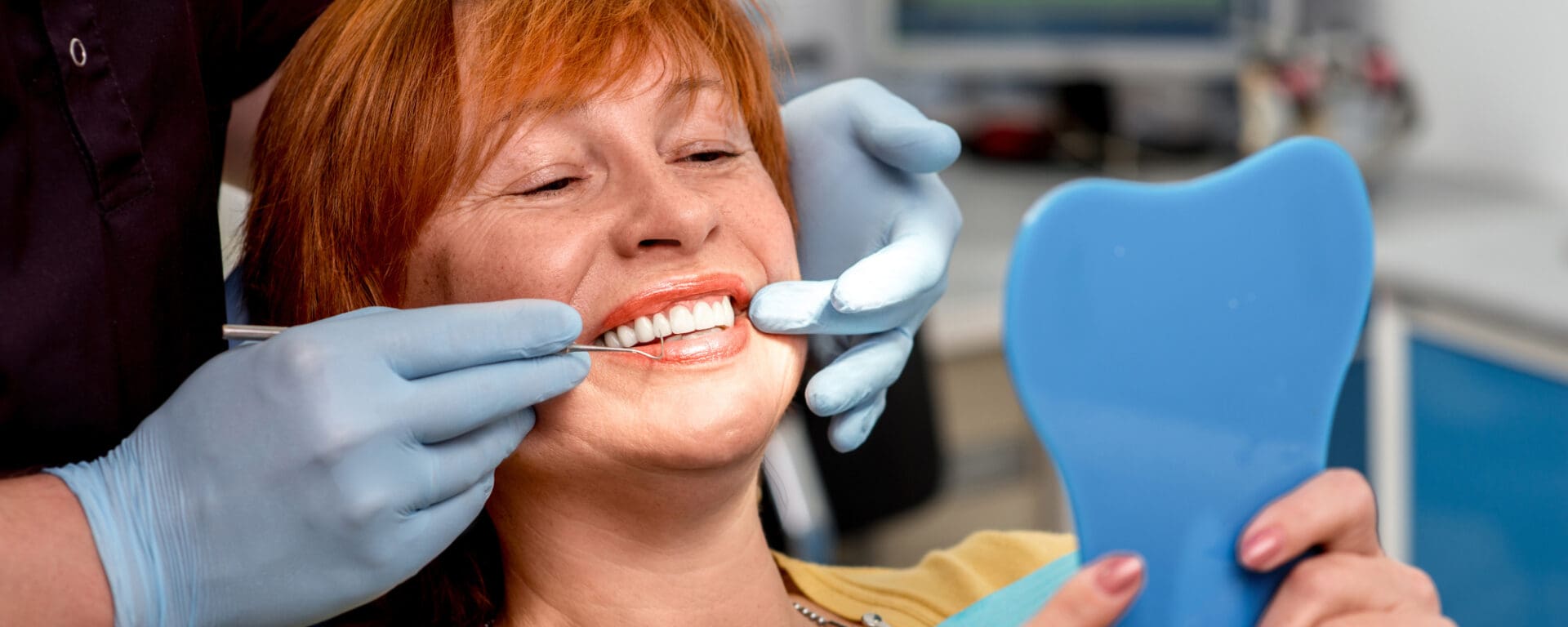What is a crown?
A crown is a “cap” that it utilized to repair a compromised tooth. A crown is indicated for a tooth that has a very large cavity, an existing filling that needs to be replaced or a fractured tooth. When 50% or more of the chewing surface of the tooth is compromised, a crown is placed to stabilize and protect the tooth. Posterior teeth (molars) in need of root canals will also require crowns to extend the life of those teeth. There are a variety of materials that we can use to fabricate your crown. The most common materials used are all porcelain and zirconia based. Your dentist will discuss your specific case with you to determine the best restoration to maximize both aesthetics and strength. The appointment time for a crown is generally about one hour and is completed with local anesthetic.
What is a Bruxzir crown and why have they become so popular for posterior teeth?
Bruxzir crowns are CAD milled crowns that are fabricated from zirconia. They are an aesthetic option for posterior crowns that also provide excellent strength. They are especially recommended for patients who tend to clench and grind their teeth. Check out the awesome video below!
What are bridges?
Bridges are fixed restorations that serve to replace missing teeth. We utilize multiple teeth as anchors to support the bridge. Similar to a crown, a bridge is cemented in place and is not removed. The appointment length for a bridge is generally about 2 hours and is completed under local anesthetic.
Advantages?
Bridges are a highly aesthetic option for replacing missing teeth. The process of receiving a bridge is generally quicker than that of an implant and substantially cheaper.
Disadvantages?
Placing a bridge requires preparation of the teeth adjacent to the tooth that is being replaced. In addition, it is a bit more difficult to keep clean as the bridge is a one piece unit. Therefore, we recommend purchasing a Waterpik to help clean underneath your bridge.
Frequently Asked Questions.
How long does the procedure take?
The process of getting a crown or a bridge is completed over two appointments. The first appointment is about 90 minutes. At this visit, we will numb the area and shape the tooth for the crown. After preparation we will take a digital 3D scan of your teeth. This will instantly be delivered to the lab so that they can begin fabricating your permanent restoration. We will then make a temporary crown or bridge to protect the teeth while we wait for the restoration to return from the lab.
The second appointment is typically completed without anesthetic. At this visit we will remove your temporary and deliver your permanent restoration. This visit takes between 30 minutes to an hour.
How long does it take for the permanent crown or bridge to return from the lab?
It typically takes 2 weeks for the permanent restoration to return.
What if my temporary crown/bridge comes off while I’m waiting for the permanent crown?
It’s important to contact us ASAP if your temporary comes off. Even if the tooth isn’t hurting, it is important to keep the exposed tooth structure covered by a temporary crown/bridge. If a temporary is not in place, the teeth will begin to shift. This could lead to fit issues with your permanent restoration. As a result, we have to reshape the tooth and take a new impression/digital scan and the lab will need to fabricate a new crown or bridge.
If you are unable to make it back into the office, we recommend buying temporary dental cement from CVS or Walgreens.
Do crowns come off?
Crowns are cemented to your teeth with very strong dental adhesives and cements. They are not meant to come out. However, older crowns will sometimes lose their cement seal and come off. As long as the underlying tooth is still healthy, we can recement the crown back in place for you. However, if the crown comes off due to a cavity underneath your crown, that will require a different solution.
How can I prevent my crown or bridge from getting a cavity underneath?
It’s extremely important to practice good oral hygiene around any dental restoration. Although dental restorations experience natural wear and tear just as teeth do, cavities underneath the restorations can be prevented with proper home care. This includes brushing 2-3x daily as well as routine flossing. It’s especially important to floss underneath the fake tooth with bridges in order to prevent cavities on the teeth supporting the bridge.
